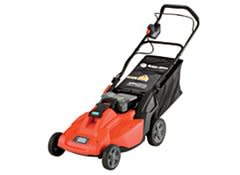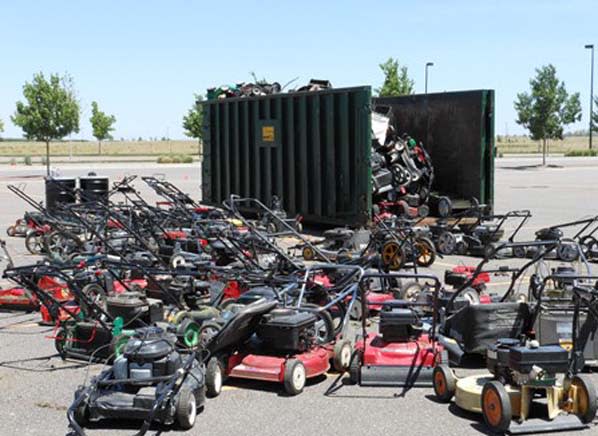Get an electric lawn mower through a lawn mower exchange
If you've decided to switch from your gas mower to an electric mower this year, take advantage of a lawn mower exchange. These programs, which take place in many areas around the country in spring and summer, get you a discounted price on an electric mower. Typically, you show up at the appointed time at the designated location, say your municipal public-works yard, drop off your old gas machine, and head home with a brand-new electric. Your old mower will get recycled.
Some of the deals are pretty sweet: Through the lawn mower exchange in San Diego County, California (PDF), residents who show up to the event with a working gas mower can get a Black & Decker CM1936 36-volt cordless rechargeable for $99.99, including tax. It usually retails for about $400.
Since the number of mowers available through an exchange is often limited—the one in San Diego County has only 650 electric mowers available this year—you'll need to get to the site early or, when possible, sign up in advance. Some exchanges give you a rebate coupon instead of selling new machines on site. The Southwest Pennsylvania Air Quality Partnership—whose program includes mowers leaf blowers, trimmers, and chain saws—is one such exchange. Also, not every exchange is limited to a county or region. This year, Utah is holding its first exchange statewide.
I'm still considering swapping my long-serving, loyal self-propelled gas model for a cordless electric mower. (In stores and online you might see cordless models called electric battery mowers; electric corded models requires an extension cord.)
Why go electric? I'd like a mower that runs quieter, needs little maintenance (repair costs for my 14-year-old mower are adding up), and doesn't produce any emissions. Remember, the air quality where I live doesn't exactly scream Garden State. My lawn is less than a quarter acre and is mostly level, making it friendly for an electric.
Our Ratings include corded and cordless electric mowers from Black & Decker, Green Works, Homelite, Remington, Ryobi, Stihl, and Toro.

Even if I go with a high-scoring self-propelled cordless electric mower from our tests, there are some concessions to make. With their narrower decks, electric mowers require you to make more passes over the lawn, and they typically don't handle tall grass as well, so you can't take too many weeks off.
Unfortunately there's not a lawn mower exchange where I live. But I'll monitor the New Jersey Department of Environmental Protection. You can check the DEP or the equivalent in your own state. I'll also visit manufacturer sites to look for news about companies participating in a lawn mower exchange. In years past, Neuton ran a virtual exchange in which consumers recycled their machines and could then get a discounted electric mower from the manufacturer.
After what's been another long, brutal winter, I'm looking forward to doing outdoor chores, including cutting the grass. (I might have to remind myself of that come mid-August.) Here's hoping I'll be doing the mowing with a discounted electric machine I got through a lawn mower exchange.
—Steven H. Saltzman
Corded vs. cordless electric mowers
A big advantage to a cordless model is that it isn't tethered to a power outlet, giving you greater flexibility when mowing, especially if your yard has trees and other obstacles.
But cordless electric mowers weigh much more than corded. The Black & Decker SPCM1936, a self-propelled electric battery mower, weighs 90 pounds. Its stable mate, the corded Black & Decker MM875, a push mower, comes in at 52 pounds.
And then there's price: The SPCM1936 costs $450; the MM875 runs $240. The corded electrics in our Ratings range in price from $160 to $240, while the cordless models start at $300 and go as high as $690. The Ego LM2000 (shown), our top-rated cordless electric, costs $500.
If I do get an electric model, I'll probably go with a cordless version even though when I tried out a couple of cordless models two years back, I was frustrated by the limited run time per charge. But according to our testers, today's cordless models run longer per charge.
—S.H.S.

More from Consumer Reports:
Best tiles for floors, counters and backsplashes
The right vacuum for pets, bare floors and carpets
5 secrets to a long lasting kitchen
Consumer Reports has no relationship with any advertisers on this website. Copyright © 2006-2015 Consumers Union of U.S.


